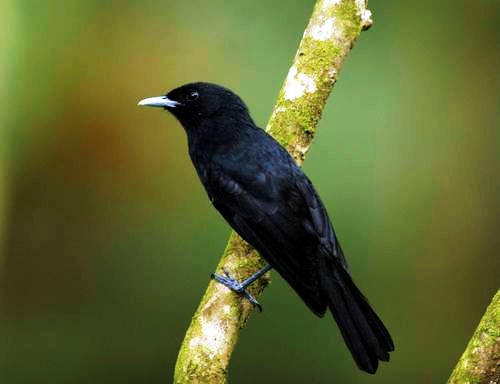Tahiti monarch

Pomarea nigra
 |
| (Photo from Birdlife) |
Common name:
Tahiti monarch (en); monarca-do-Taiti (pt); monarque de Tahiti (fr); monarca de Tahiti (es); Tahitimonarch (de)
Taxonomy:
Order Passeriformes
Family Monarchidae
Range:
This species is endemic to the island of Tahiti, in French Polynesia. Even within the island it is restricted to just 4 lowland valleys.
Size:
The Tahiti monarch is 15 cm long and weighs 25 g.
Habitat:
They are found in tropical and subtropical forests dominated by mara Neonauclea forsteri, being present at altitudes of 80-400 m.
Diet:
They forage both in the canopy and the undergrowth of the forests, taking various insects.
Breeding:
Tahiti monarchs breed in October-February. They build a a cup-shaped nest made of moss and decorated with cobwebs, where the female lays a single egg. The egg is incubated for 15–17 days and the chicks fledge 3 weeks after hatching.
Conservation:
IUCN status – CR (Critically Endangered)
This species has an extremely restricted breeding range and a global population of just 35-50 birds. Since 2004, the species has shown signs of recovery, with new pairs becoming established in abandoned territories, mostly thanks to the conservation measures that were put in place. The main threats to this species are the decline in habitat quality caused by the spread of invasive plant species, such as the African tulip tree Spathodea campanulata, but also the predation by introduced black rats Rattus rattus, and goat grazing is leading to habitat degradation in some areas. Predation by cats and swamp harrier Circus approximans and competition with other passerines may also have a negative impact on this species. Rat control around nests, using poison and tree bands, as well as some control of invasive plant species has had some success in preserving this species.
































